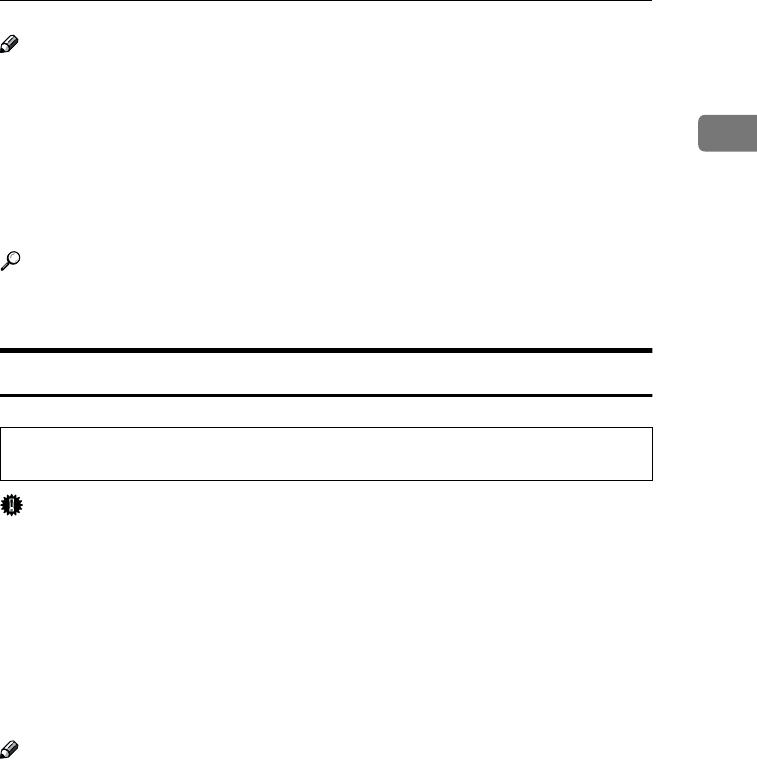
Copy Paper
13
1
Note
❒ Postcards should be fed from the bypass tray.
❒ When printing on envelopes, note the following:
• Load the envelope with the copy side face down on the bypass tray.
• Check that envelope flap is securely folded up.
• Before loading the envelope, flatten the leading edge (the side being fed
into the machine) by running a pencil or ruler across them.
• Use only rectangular envelopes.
Reference
If you want to add paper, see p.42 “h Loading Paper”.
If you want to change the paper size, see p.47 “Changing the Paper Size”.
Non-recommended Paper
R
CAUTION:
Important
❒ Do not use any of the following kinds of paper or a fault might occur.
• Thermal fax paper
• Art paper
• Aluminum foil
• Carbon paper
• Conductive paper
❒ Do not use copy paper that has been already copied on. Otherwise, a paper
misfeed might occur.
Note
❒ Do not use any of the following kinds of paper or a misfeed might occur.
• Bent, folded, or creased paper
• Damp paper
• Torn paper
• Slippery paper
• Perforated paper
• Rough paper
• Thin paper that has low stiffness
• Paper with much paper dust on its surface
❒ If you make copies on rough grain paper, the copy image might be blurred.
• Do not use aluminum foil, carbon paper, or similar conductive paper to avoid
a fire or machine failure.
StellaC1a-EN-CopyF_V4_FM.book Page 13 Wednesday, September 12, 2001 4:03 PM


















